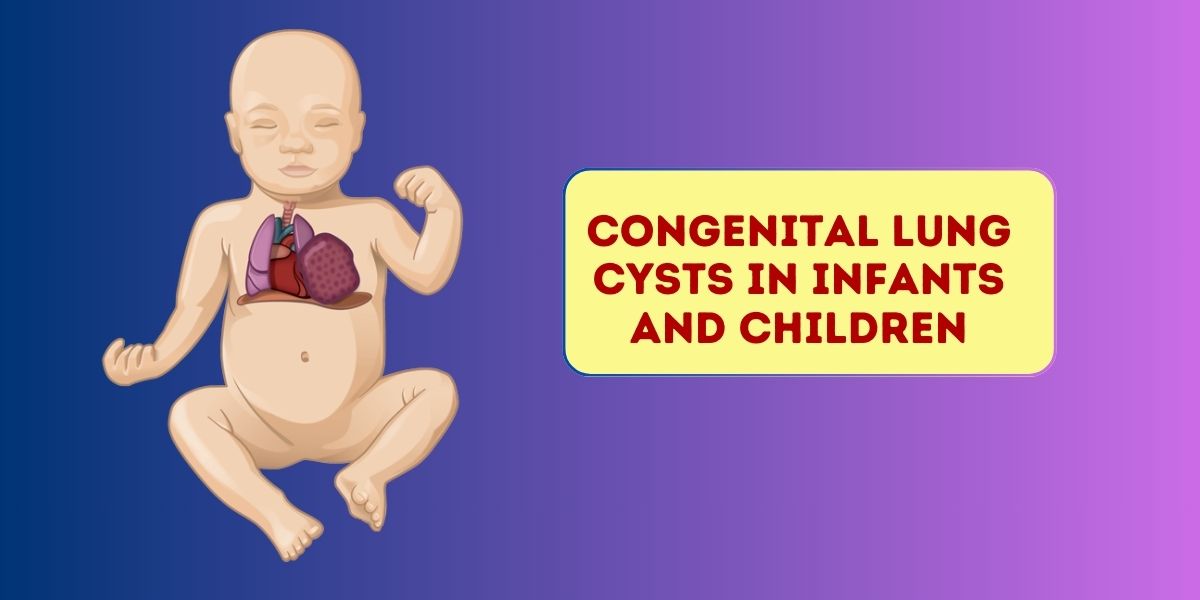Understanding Congenital Lung Cysts in Infants and Children
Congenital lung cysts in infants and children are a rare but important medical condition that requires careful attention and understanding. These cysts, which are fluid-filled sacs, can develop in the lungs of babies even before they are born. While they may not always cause symptoms, they can lead to serious complications if left untreated.
What Are Congenital Lung Cysts?
Congenital lung cysts are abnormal, fluid-filled sacs that form in the lungs of babies during fetal development. They are typically classified as either bronchogenic cysts or pulmonary sequestrations. Bronchogenic cysts originate from abnormal budding of the tracheobronchial tree during embryonic development, while pulmonary sequestrations result from abnormal lung tissue that is not connected to the normal bronchial tree.
Causes of Congenital Lung Cysts
The exact cause of congenital lung cysts is not always clear. However, they are believed to result from abnormal development of the fetal respiratory system during early pregnancy. Genetic factors may also play a role in some cases. Additionally, exposure to certain environmental factors or toxins during pregnancy may increase the risk of developing these cysts.
Symptoms of Congenital Lung Cysts
Congenital lung cysts may not always produce symptoms, especially if they are small and do not interfere with lung function. However, larger cysts or those located in certain areas of the lungs may cause symptoms such as:
- Respiratory distress – Difficulty breathing or rapid breathing may occur, especially during physical activity.
- Coughing – Persistent coughing, sometimes accompanied by wheezing, may be present.
- Recurrent respiratory infections – Children with congenital lung cysts may experience frequent respiratory infections, such as pneumonia or bronchitis.
- Chest pain – Pain or discomfort in the chest area may occur, particularly if the cyst is large or causing pressure on surrounding tissues.
It is important to note that some congenital lung cysts may be discovered incidentally during prenatal ultrasound or routine imaging studies.
Diagnosis of Congenital Lung Cysts
Diagnosing congenital lung cysts typically involves a combination of medical history, physical examination, and imaging studies. Ultrasound is often used during pregnancy to detect these cysts before birth. After birth, chest X-rays and computed tomography (CT) scans may be performed to visualize the cysts and assess their size and location. In some cases, additional tests such as magnetic resonance imaging (MRI) or bronchoscopy may be necessary to further evaluate the cysts and rule out other conditions.
Treatment Options for Congenital Lung Cysts
The appropriate treatment for congenital lung cysts depends on several factors, including the size and location of the cysts, as well as the presence of symptoms. In many cases, small, asymptomatic cysts may not require any treatment and can be monitored closely with regular follow-up visits and imaging studies. However, larger cysts or those causing symptoms may require intervention. Surgical removal of the cysts is often recommended to prevent complications such as infection, bleeding, or compression of nearby structures. Minimally invasive techniques, such as thoracoscopy or robotic-assisted surgery, may be used to remove the cysts with less trauma and faster recovery times.
Conclusion
Congenital lung cysts are rare but significant abnormalities that can affect infants and children. Understanding the causes, symptoms, diagnosis, and treatment options for these cysts is essential for providing timely and effective care. While some cysts may not require treatment, others may necessitate surgical intervention to prevent complications and ensure optimal outcomes. With proper medical management and follow-up, most children with congenital lung cysts can lead healthy and fulfilling lives.
Must Read – Kidney and Bladder Stones in Children – Symptoms and Causes


